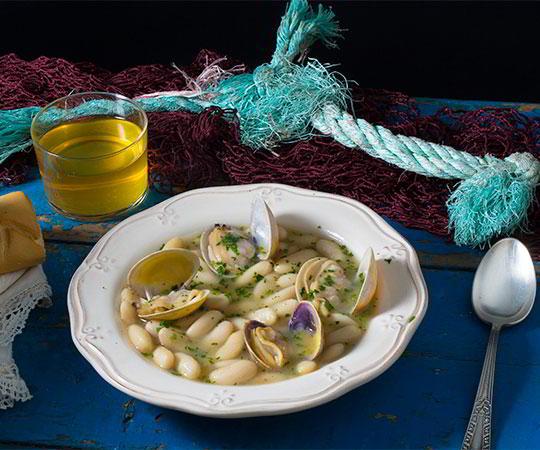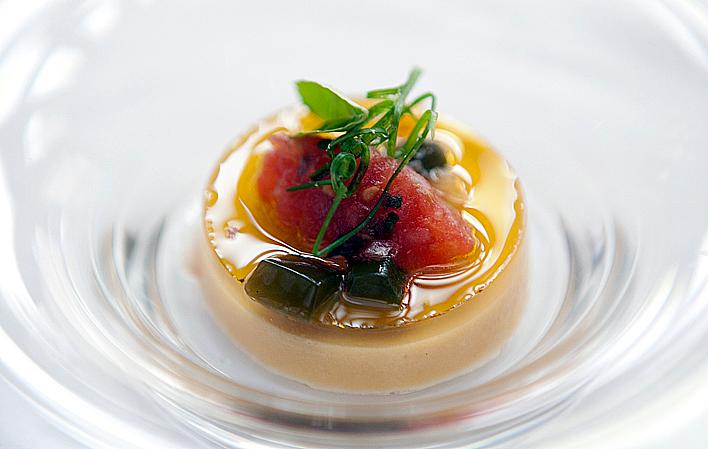Asturian gastronomy is very rich and combines tradition and innovation in a balanced way in all kinds of dishes and creations: soups, stews and pulses, fish and seafood, meat and poultry, salads and vegetables, tapas and pinchos, rice dishes, pasta and desserts.
/documents/39908/1670098/fabes-con-almejas.jpg/79e3e656-3c9a-c444-595b-38437005ee98?t=1687331590948

Asturian cuisine recipes are healthy, tasty, and incredibly diverse. They are an essential part of the Asturian gastronomic universe, characterized by a rich history, strong identity, deep-rooted traditions, exceptional quality of ingredients, and a prominent presence of both natural and human landscapes.
History and tradition undoubtedly contribute to the unmistakable and unique personality of Asturian cuisine, which takes on countless forms and flavors through hundreds of recipes of all kinds.
Within this culinary cosmos, you'll find timeless recipes that have been passed down from generation to generation, as well as innovative creations inspired by the creativity and expertise of their authors, always mindful of the defining features that shape the cuisine of Asturian landscapes.
/documents/39908/1670098/postre.jpg/4a966005-ebda-32db-cb38-b2859f6b1dc1?t=1687331593151

The result of the interaction of the various sources that nourish Asturian gastronomy is brilliant and distinctive, making cuisine in Asturias one of the main tourist attractions for both locals and foreigners.
Savoring the Natural Paradise through its multiple and excellent recipes is always a unique experience that takes you on a journey to unforgettable moments and emotions

Organic tomato, spelt and arbequina bread
- Time Time: 1 h
Ingredients
For 4 people:
Mimoso de Pan de Excanda with Arbequina:
- 400 gr. of Translucent Tomato Water
- 110 gr. of Arbequina Extra Virgin Olive Oil
- 90 gr. of 2 or 3 days old CEA breadcrumbs
- 2 sheets of gelatine
- 1 g. of agar agar
Gelatinised tomato water:
- 1 kg of very ripe tomatoes
- 1 tbsp. sugar
- Salt
Preparation
Place half the tomato water, the bread and the oil in the thermomix. Bring the other half of the tomato water to the boil with the well-weighed agar-agar, dissolve the previously hydrated gelatine leaves and pour into the thermomix; turn on maximum power for 2 or 3 minutes, do not strain and set in square moulds with a height of 2 cm.
Squeeze the tomatoes with your hands into a bowl, add the sugar and salt, and leave to stand for about 6 hours. After this time, blend in a thermomix and strain through a cheesecloth overnight with a weight on top.
Correct the salt and sugar content of the liquid obtained and curdle it with 2 g of agar-agar for every kg of water.
Bring the agar-agar to the boil with a quarter of it, mix with the rest at room temperature, place 2 spoonfuls in a chosen deep dish and leave to set. Keep in the refrigerator until ready to serve.

